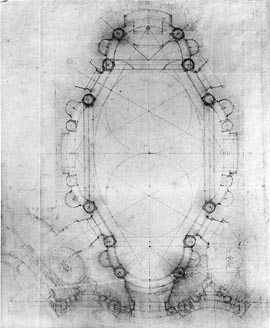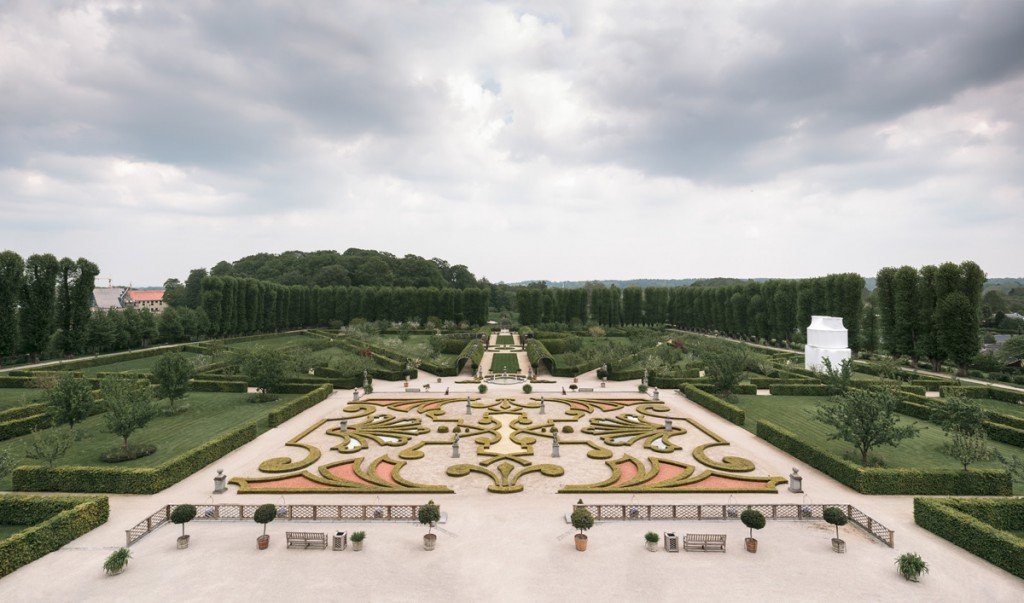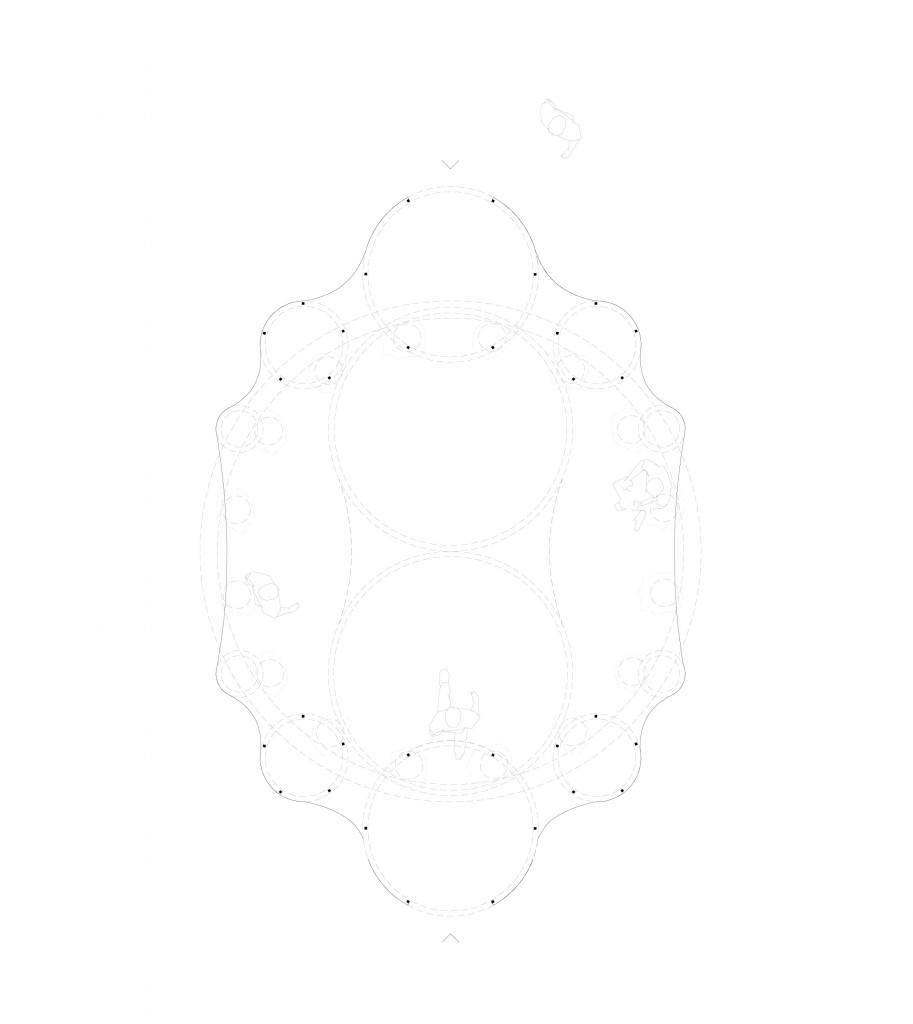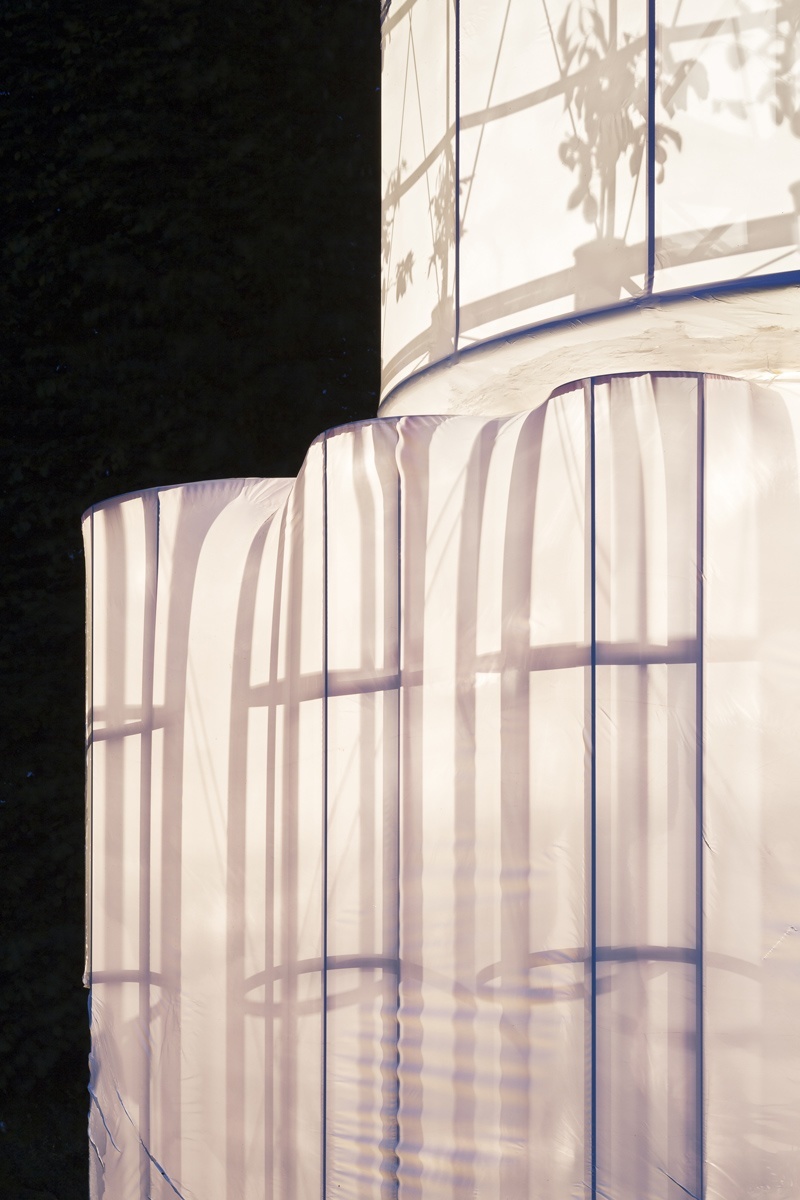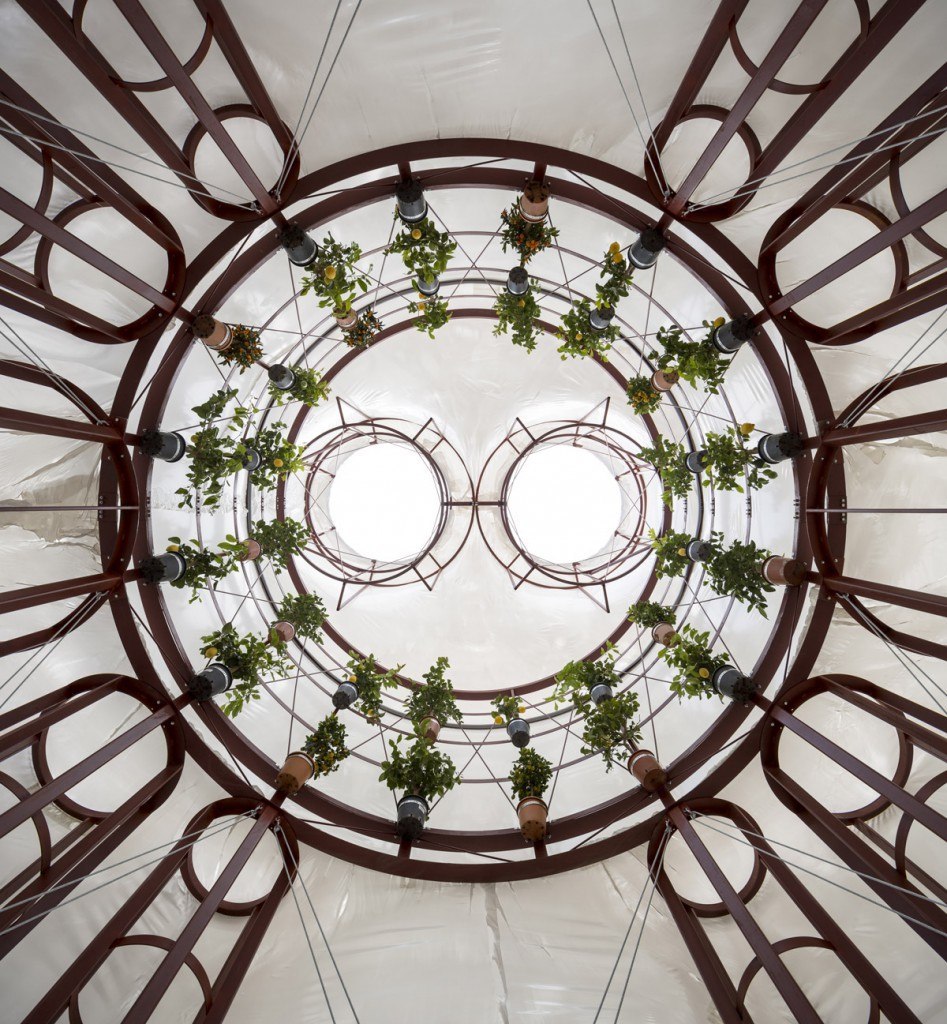Earlier this summer we visited Gl. Holtegaard, an art gallery outside Copenhagen which was formerly home to one of Denmark’s most significant baroque architects, Lauritz de Thurah (1706-1759). After completing projects such as the Hermitage Hunting Lodge and the spiraling tower of Our Saviour’s Church (as well as establishing himself as one of Denmark’s first architectural historians), he rebuilt Gl. Holtegaard and established a baroque landscape garden on the grounds.
The garden forms the context for three pavilions to be built over the next three years, each with a different theme (the orangery, the menagerie and the stage). This year’s pavilion is created by the young architects Kim Lenschow Andersen, Søren Thirup Pihlmann (who together run the newly established studio Lenschow & Pihlmann) and Mikael Stenström, after winning a 72-hour design competition.
From Gl. Holtegaard’s press text:
“The Orangery is situated in formal gardens at Gl. Holtegaard Art gallery in the northern part of sealand, Denmark. The Orangery links the Baroque era to our current day in the form of a strong, artistic work that presents itself as a unified whole. The pavilion is a reinterpretation of one of the most iconic buildings of the Baroque era: the church of San Carlo alle Quattro Fontane in Rome designed by the architect Francesco Borromini (1599–1667). Borromini used basic geometric shapes, circles and ovals to create a dynamic church space of great beauty. The new orangery in the formal gardens at Gl. Holtegaard takes its point of departure in the floor plan of Borromini’s building. Resembling a sketch of the original church space, the Orangery consists of a steel structure that has been covered in strong plastic – specifically a type of ’shrink wrap’ developed to protect cars, boats and other large objects. Inside this space is a living orangery where citrus plants hang from the dome. This reinterpreted orangery fuses a classic shape with our current high-tech world; a world full of materials that are not intended to be beautiful, but purely to meet specific utilitarian needs.”
Images by Hampus Berndtson, courtesy of Lenschow & Philman
